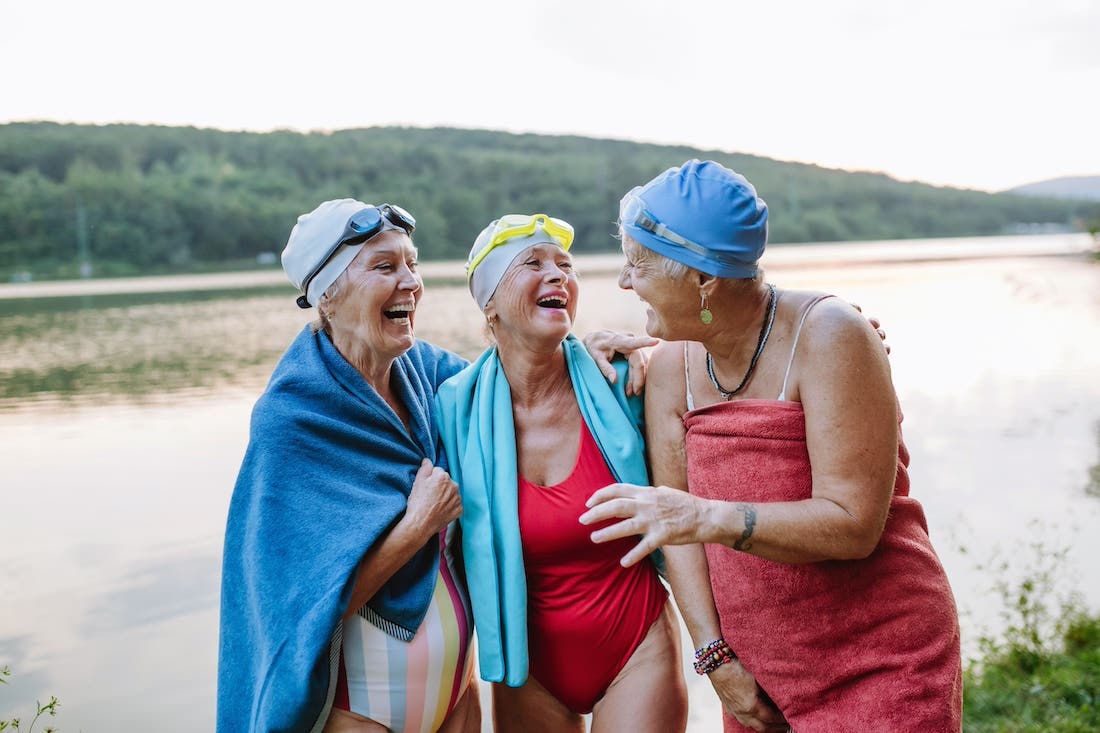Memoir/Personal Essay First Place Winner: “South of That”
Congratulations to Curt Klinghoffer, first place winner in the Memoir/Personal Essay category of the 89th Annual Writer’s Digest Writing Competition. Here’s his winning essay, “South of That.”
Congratulations to Curt Klinghoffer, first place winner in the Memoir/Personal Essay category of the 89th Annual Writer's Digest Writing Competition. Here's his winning essay, "South of That."
South of That
It’s 3:30 AM, and most of the East Coast is sleeping, but the party at Mangos is far from over—everyone knows that. The gargantuan bouncers in black flexing their muscles by the door know it, for sure. So do the caffeinated barmaids oozing sweat as they try to make the most for their mojitos and margaritas. The platform dancers dressed in skimpy butt- and breast-revealing outfits, who contort their bodies in spasmodic jerks to amped-up electric guitar riffs—they’re undeniably in mid-party mindset, too. Even the rocker Robert Palmer, dead many years now, seems to know they aren’t going to turn him off or fade him away anytime soon; there he is, banging a gong for everyone at full volume. That famous refrain of his keeps on surging, as if to package and deliver all the juices already set to fire in the room.
It’s clearly not a resurrection that drives this scene, though. It’s the throngs of guests jammed into the place who want more music, more drink, more body contact, more of everything. They are why Mangos Tropical Café, like the rest of South Beach, pays no attention to an inconsequential trifle like the hour of the night.
While time moves like sleight of hand, the place has a seamy underside that’s kept well under wraps. Left of center stage, a skinny girl passes out and is hustled out of view, but her companion turns his back and keeps smiling, finger snapping, pretending to not care. There are those zoning on ecstasy, just conscious enough to stay blasé. People’s cards are getting maxed out left and right on drinks and tips. Yet none of these partiers, no matter how wired, considers their time, money, or sexuality stolen property.
Mangos is just one part of the luxuriant scape where the splendors of cosmopolitan Miami collide and collude with the ocean. Most who come here to South Beach feel the magnetism of the view from either of these two vantage points, but few know how slippery the approach and retreat will turn out to be. How could anyone buck this tide and survive such an assault on the senses? It’s a mile of coastline lying like a lion in wait, its jaws already wide open, soon to devour all the world feeds it.
So what the hell am I doing in here? I’m too introspective for a place like this, I keep telling myself. This is why Elisa, lean, tan, and hungry, has lost interest in our conversation. Her eyes have drifted to one of twenty TVs dotting the skyline of the room, each displaying the same soccer game. I watch her traverse the nightclub as she follows a play down the field from one end to the other; for her it must be like old-fashioned animation—it’s a mere half-inch rotation of the neck each time. Spain deep into Germany territory. Goal, Spain. Stadium mania. Daytime there and nighttime here. But there’s no light at all in Elisa’s eyes; she’s at sea.
And suddenly, paradoxically, it’s so cold, even with the packing of bodies so dense there’s barely room to move. The air conditioner is turned up high, and ceiling fans double the effect, making a refrigerator out of the room. There has to be some other current moving in the sea.
It’s the Ocean Drive sidewalk, where the crowd is thinner and the air is fresher, all the more inviting as it beckons me outside. There’s singular beauty waiting to be found here at the beach beneath all this madness. Out into the street dappled with beautiful neon light. Soft blue, soft white, soft green. Patterns of lights forming palm leaves, coffee cups, words. How can artificial light be so alluring?
People pass; in fact, it’s a sea of them, words, languages, islands, groups, archipelagos, a little space here, a little space there, but not for too long. There are young men, handsome and ripped, many of them alongside women with staggering curves, yet the men seem greatly outnumbered, fading into the background. They move as gingerly as soccer players, feinting here, sidestepping there, restraining their hands from the action, yet they register as lightly as the ones on the screens inside Mangos.
The imprint of the feminine is powerful here. New York is a man, big, brawny, you bark it, you honk your horn, you do all seasons, but Miami Beach is always a woman in summer. Feel it in the flow of the words as you say its name slowly, feel it in the gentle breeze, hear the woman beckoning in the waves that crash insistently from the black expanse not far past the low stone wall. La playa de Miami. Vowels and flowers and water. This whole region of the world is a woman. Florida. Panama. Bahama. Venezuela. Havana. Cuba. There’s fire and wine in the mere sounds of the names, conjuring zones of relaxation outstretched, conspiring together in the forgetting of time.
Pause to look and listen, though, and you can find traces of a changed town, some subtle, some not. South Beach, once a dilapidated haven for Cuban refugees, criminals, thrifty Quebecois and retired New York Jews living on the cheap, has transformed herself into a unique tourist melting pot, drawing big from places like Boulder, London, Paris, Zurich, and Israel. You get dizzy just eavesdropping on conversations. It all comes at you too fast. Too many languages and dialects to classify and too many looks to stereotype a damn thing, except that they’ve all parked their Benzes and Beamers and Bentleys here. Party music spills out of the hotels with the deceptively soothing neon lights, the Clevelander, the Delano, and the DiLido. But now it, too, defies categorization. The simplicity of Gloria Estefan and the Miami Sound Machine and Latin pop belongs to the last millennium. It’s a crazy fusion of old and new idioms now, hybrids of trance, rap, and hip-hop laced with Spanglish interjections, dubstep and reggaeton. The songs are strident and clear when you’re right in front of one club but become a muddy mélange when you’re in the short space between two. Everything is loud.
The luxury cars lining the street might be competing for newness, but in the rarefied light of Ocean Drive, personal age is just a vague abstraction. There are eighty-year olds trying to look forty, forty-year olds trying to look twenty, and teenagers shooting for thirty, drinking from Styrofoam cups, oozing bling, all de rigueur for SoBe. Celebrities work themselves over to pass as tourists and tourists do the same to pass as jetsetters. Sleight of hand, all of it. Everyone’s got a phone in their hand to transport themselves elsewhere at a moment’s notice. Intermittently they ring with outlandish hooks from pop songs that span decades. Here’s “Bad to the Bone” calling. Now it’s “Macarena.” I can see beautiful people just ahead of me studying their iPhones at great length, maybe trying to optimize their Tinder dates. And right over there, another buff dude is changing his flight preferences, barking into his phone—“Remember, I’m not doing any red-eye. Got it?” And of course, up and down this storied street, there is the taking and retaking of selfies and shots of eclectic dishes and waiters in the sidewalk eateries, the News Café, the Pelican, Larios. Because this moment, this place, this face, magical as it is, is never good enough.
But what to wear? The sun wasn’t hot enough to bronze the whole body without some help from the swimsuit, and now the lights aren’t bright enough to display it without some help from the wardrobe. Dresses reveal bare backs, bare shoulders, backs of thighs, maximum flesh, no tan lines, only occasional spunkily-patterned and -placed tattoos.
Everyone moves to different music. Walk a little longer on the wild side, and interspersed with unabashed straight lovers, in greater numbers you find women holding hands with women and men with men, kissing, caressing, no holding back. Here where genders fuse, where boundaries of hair, skin, leather, and nails are all blurred, there’s no need for a room. Every visual signal is pushed to the limit until the limit itself resides only in the imagination. The only collective question one senses brimming in the ether is where to show off the dates, the bodies, the bling now shimmying in the street.
On the left, in a block draped in rare Ocean Drive shadow is an option, maybe not as loud and glitzy as the others but equally sure to make a splash on Instagram: The Mediterranean Revival mansion where Gianni Versace lived, where he was shot dead at age fifty on the front steps one July morning. It’s been through a few sets of hands since then and is now a restaurant within a boutique hotel, Villa Casa Casaurina. Don’t let that mouthful of a name intimidate you; the menu outside near those steps is enticing. You can enjoy a glass of Aska Red, 25, or some filetto di manzo rossini, 59, in the manner that Gianni would, as perhaps he did the evening before his fateful walk to the News Café for his morning espresso.
It’s near the end of the mystifying club strip now. Ocean Drive will soon angle over toward Collins; the landscape will change yet again to parking lots and mid-rises; up ahead is the Art Deco Historic District and off to the left, the World Erotic Museum. It’s like exploring the outermost limits of the universe and discovering that it ends with a wall—disillusioning and reassuring almost at the same time.
There is, however, another option. It’s a hard right from here, due east of all the mania. The Atlantic Ocean, essentially unchanged since the beginning of recorded time, has become audible as the cacophony behind me starts to fade.
The passage from light to dark is so beautiful and so empty of people, it seems impossible, and yet vindicating, that it hasn’t been repossessed like abandoned property, too. The loafers are gone and there’s nothing but sand beneath my feet now. All the music and crowd noise condense into a buzz, like a TV-show laugh track set to very low volume, maybe just about to be turned off. The neon signs fan out like a kaleidoscope with faint letters and shapes in the background, patterns almost indistinguishable, just a warm array of soft light with a not-unfriendly buzz.
Was that someone whispering? Listen. A palm tree’s leaves titter in the breeze, speaking their own language, showing how simple it is to communicate. You don’t need a gilded invitation. No password. You are here. And here, if you pay attention, I mean listen at all, you soon discover the insistent rolling of the waves to be louder than any other sound, near or far. The water will be warm in a matter of hours and will sparkle aquamarine like no other water on the East Coast. The real beauty of South Beach lies right here, even if you have to reassess yourself and the world to feel it.








